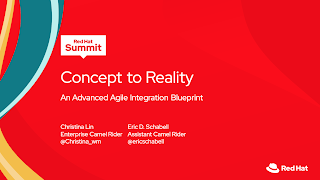In the video below, we take a closer look at how to insert a record in the database using JdbcTemplate with Spring Boot. Let’s get started!
In 2019, the market revenue of IoT reached $ 212 billion. There are about 26.66 billion connected IoT devices worldwide, and this number is to reach 75.44 billion by 2025. The UN estimates that, in May 2020, the world population is 7.78 billion people. A simple math operation tells us that an average person owns from 3 to 4 IoT devices. Do you have one? Maybe a smartwatch? A smart TV? Or a smart car?
Moving further, the population is expected to reach 8.1 billion people in 2025. The same math calculation shows us that, in 2025, an average person will have from 9 to 10 smart devices in their possession. Do you see where I am leading you to? Do you want to join this prosperous market niche and make your IoT device to be one of these 9 to 10?
What happens when you put two top thinkers together to talk about DevOps, continuous integration, and CI test automation strategy?
That’s what happened in November 2019, when Dr. Nicole Forsgren, VP of Research & Strategy at GitHub, and co-author of Accelerate: The Science of Lean Software and DevOps, joined a webinar with Angie Jones, test automation consultant and automation architect at Applitools.
Last week, a few of my very senior colleagues and I were remarking about how many new DevOps tools are emerging and how it’s getting harder and harder every day to keep track of them and where they fit into the world. I asked several of them where these tools — Ansible, Terraform, Salt, Chef, Bamboo, CloudFormation — fit in. Why would I use one versus the other? Are they even the same thing? Am I missing a major player? I got back the same blank stares/questions that I had. So, I thought I would do some research, read, and try to make sense of it for all of us so we could classify products into categories or uses to which we are all familiar.
Before we start to talk about DevOps tools and categories, let’s take a step back and discuss a few basic (but often overloaded) terms and what they mean.
 Last week kicked off the Red Hat Summit 2020 virtual event. It’s amazing to imagine that so many people decided to sign up and attend this free event over the next two days.
Last week kicked off the Red Hat Summit 2020 virtual event. It’s amazing to imagine that so many people decided to sign up and attend this free event over the next two days.
For me it’s a chance to share some ideas that my friend Christina Lin and I have been working on for some time, advanced integration blueprints.
“In computing, memoization or memoisation is an optimization technique used primarily to speed up computer programs by storing the results of expensive function calls and returning the cached result when the same inputs occur again” — Wikipedia article on memoization.
I’ve written a two part article in Memoization in JavaScript. The first part explains the concept with basic implementation in JavaScript code. It details a way to apply the technique on function calls. It is generic to handle most JavaScript functions.
When discussing the development impact on existing applications while transitioning to microservices, there are five questions that keep popping up in one form or another. They are the same regardless of the size of the organization and seem to become part of strategy discussions later in the process as organizations move towards microservice architectures.
This week, we check out how Microsoft Teams could be breached with a single GIF image sent in a chat, and Auth0 by changing the case of a single character.
In other news, a report on security issues in smart home hubs has been published, and a new online training on OAuth2.0 and OpenID Connect is available.
Introduction
Teams that work with Machine Learning (ML) workloads in production know that added complexity can bring projects for a grinding halt. While deploying simple ML workloads might seem like an easy task, the process becomes a lot more involved when you begin to scale and distribute these loads and implement tools like Kubernetes. Although Kubernetes allows teams to rapidly scale their organization’s infrastructure, it also adds a layer of complexity that can become a major burden without the right tools.
Today I’m going to introduce you to an OSS project known as Kubeflow that seeks to assist engineering teams with deploying ML workloads into production in Kubernetes. The Kubeflow project is dedicated to making deployments of machine learning (ML) workflows on Kubernetes simple, portable and scalable.
In the video below, we take a closer look at Spring Boot JMSTemplate with Embedded ActiveMQ. Let’s get started!










